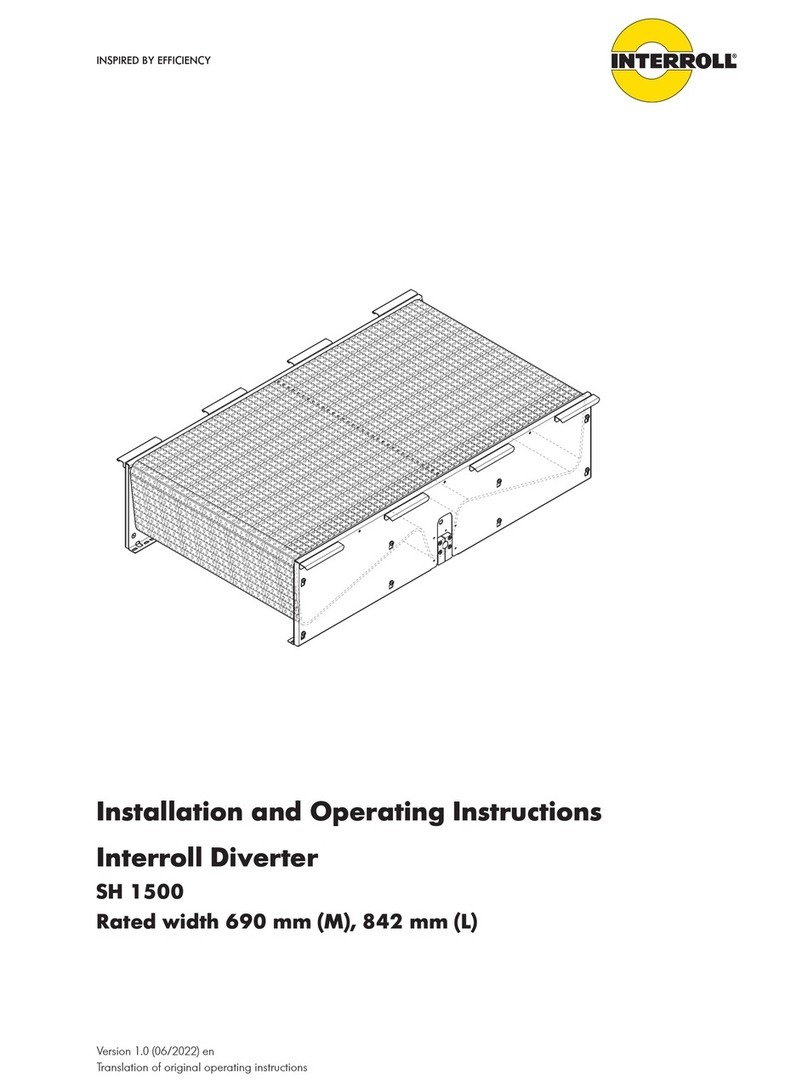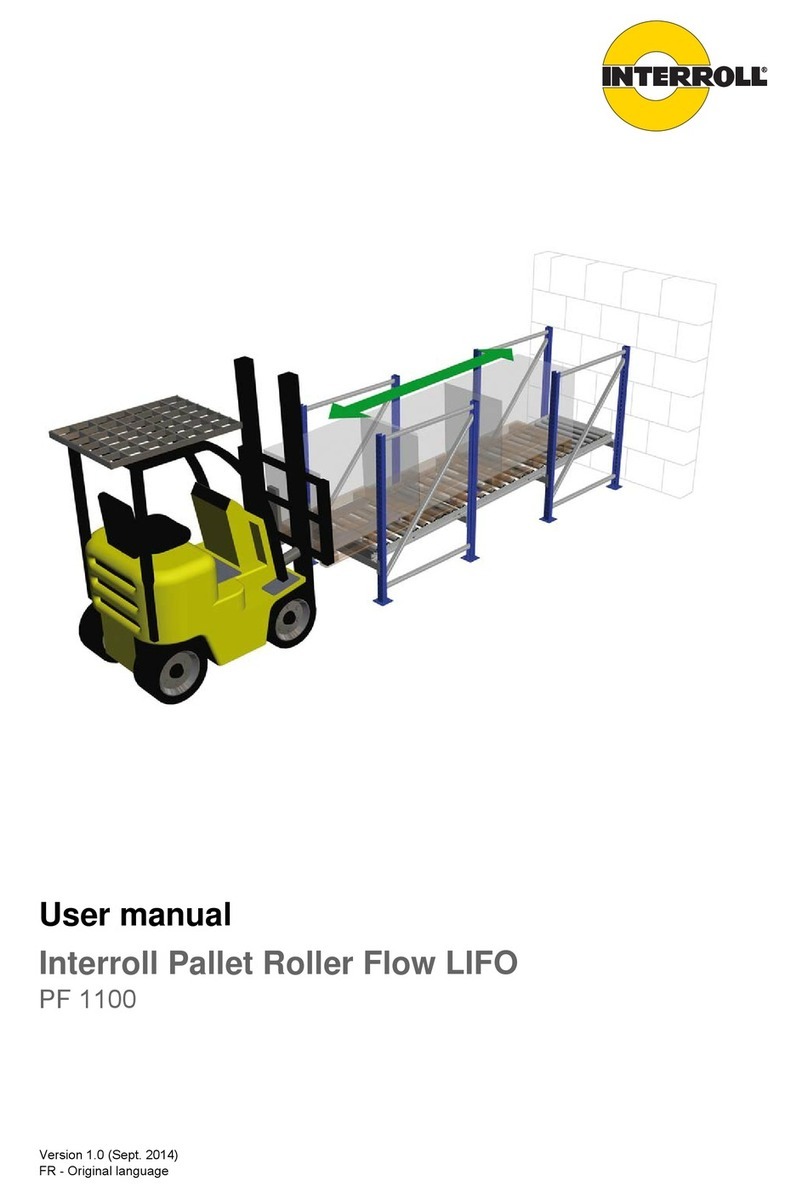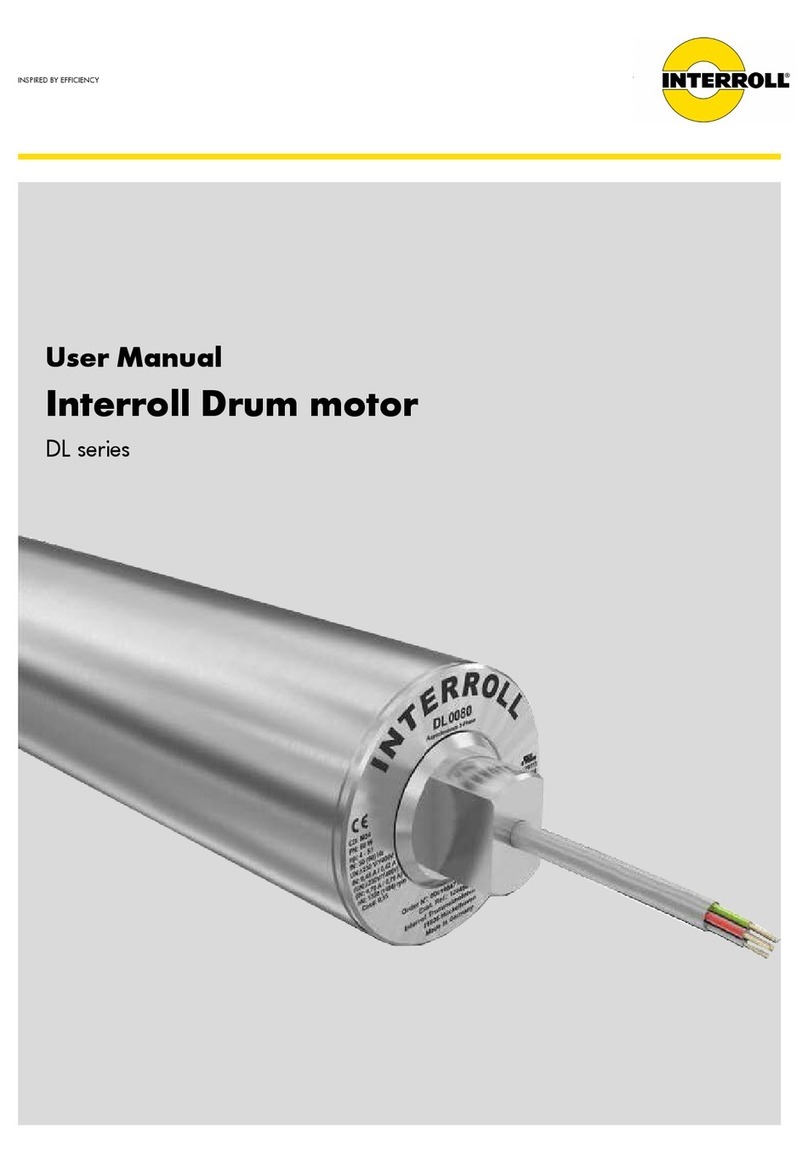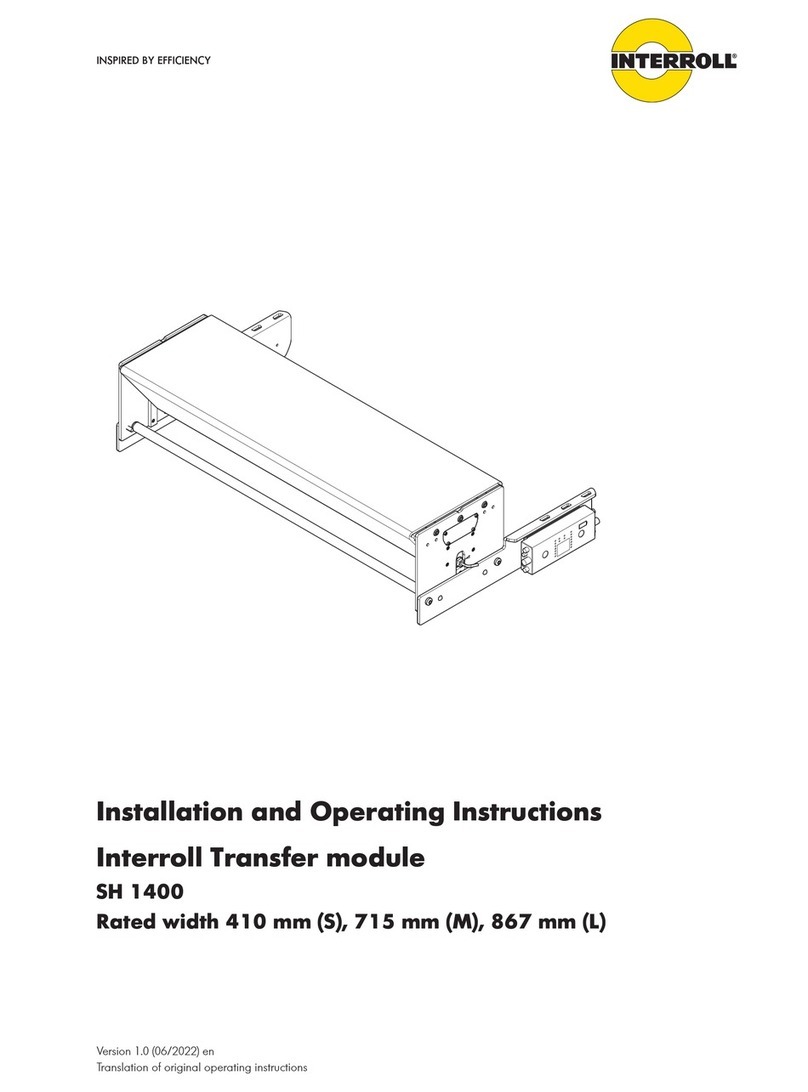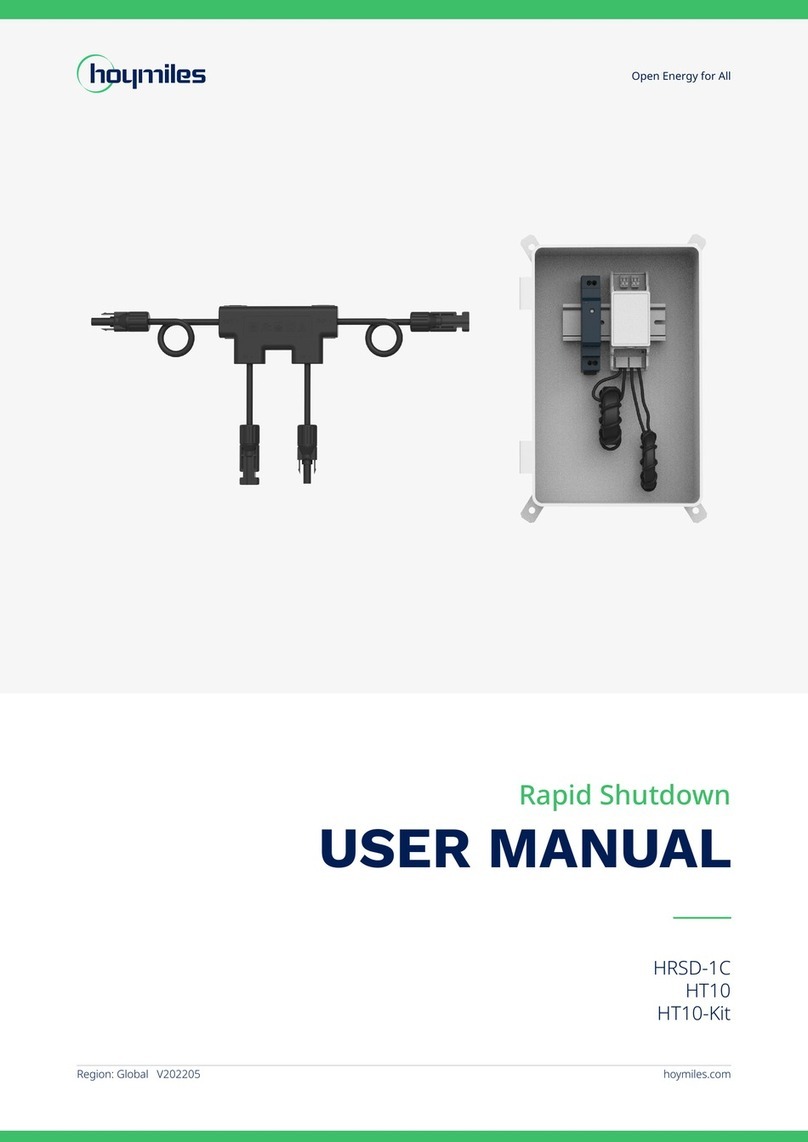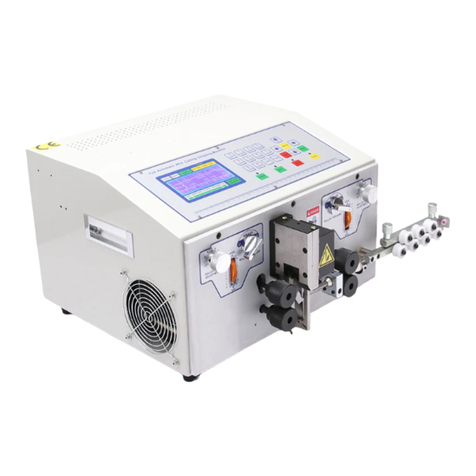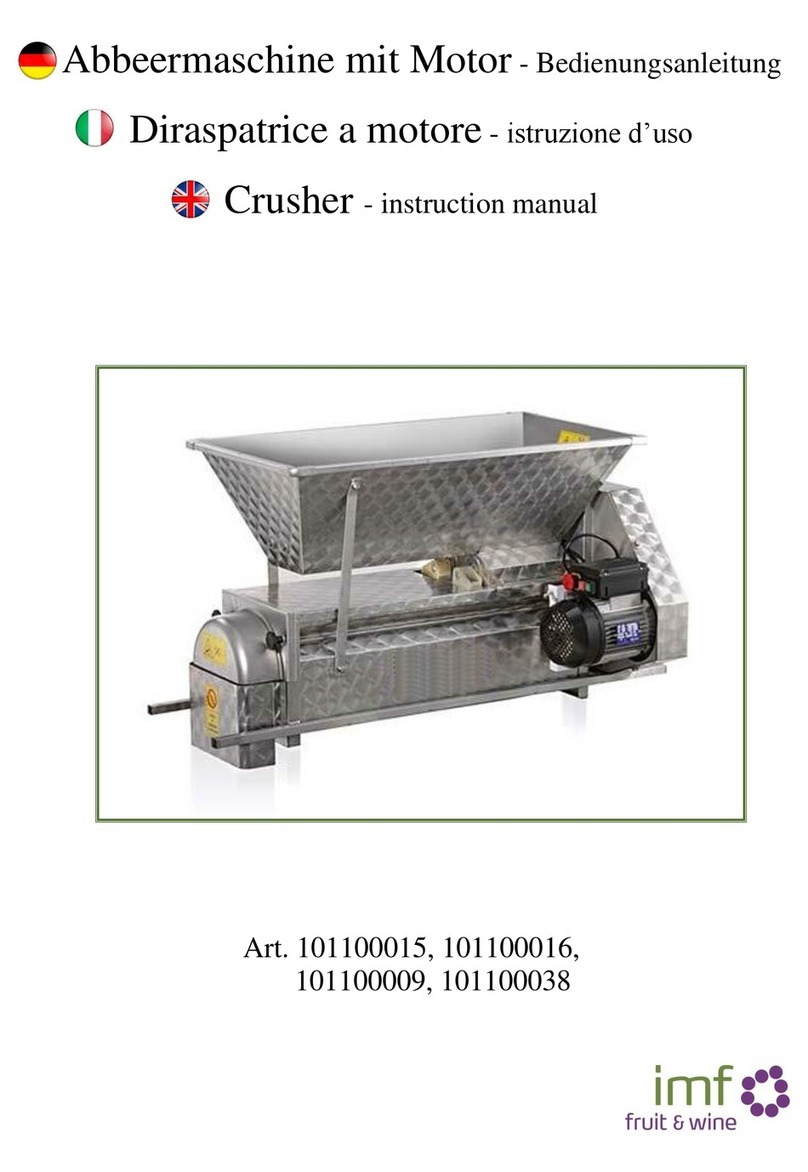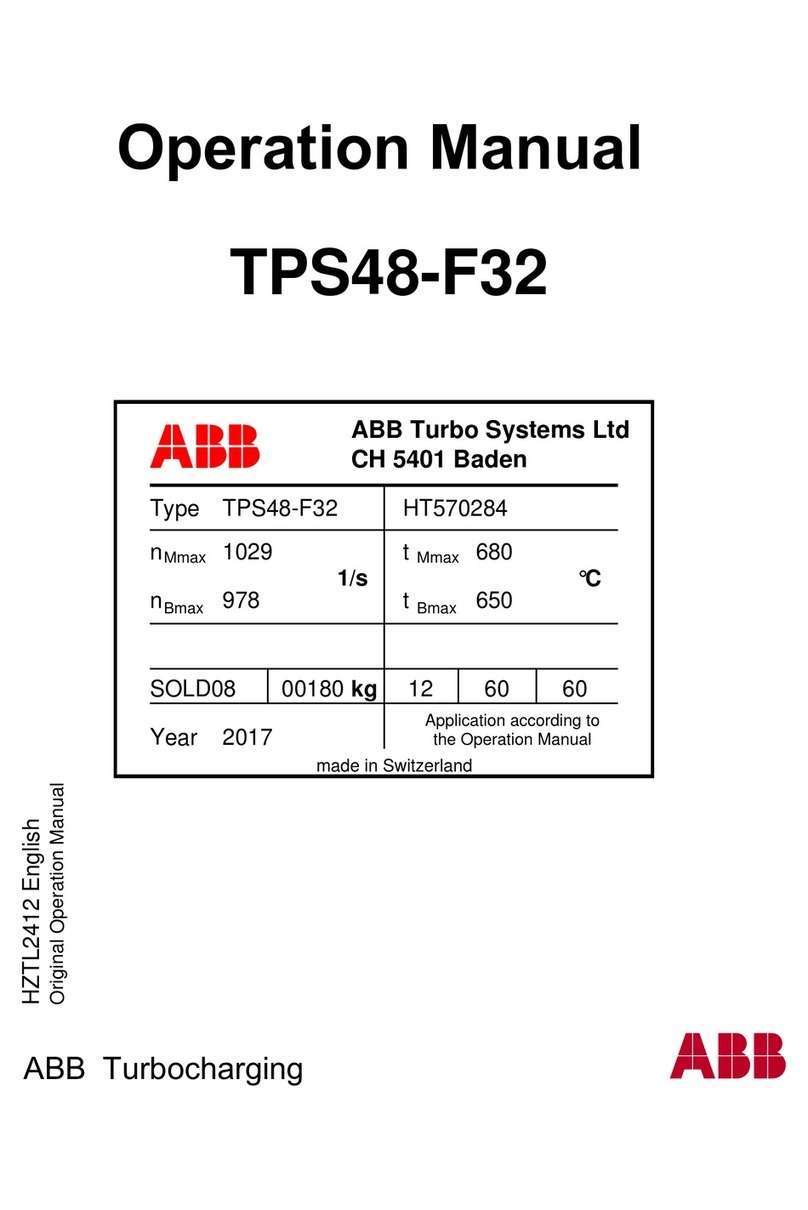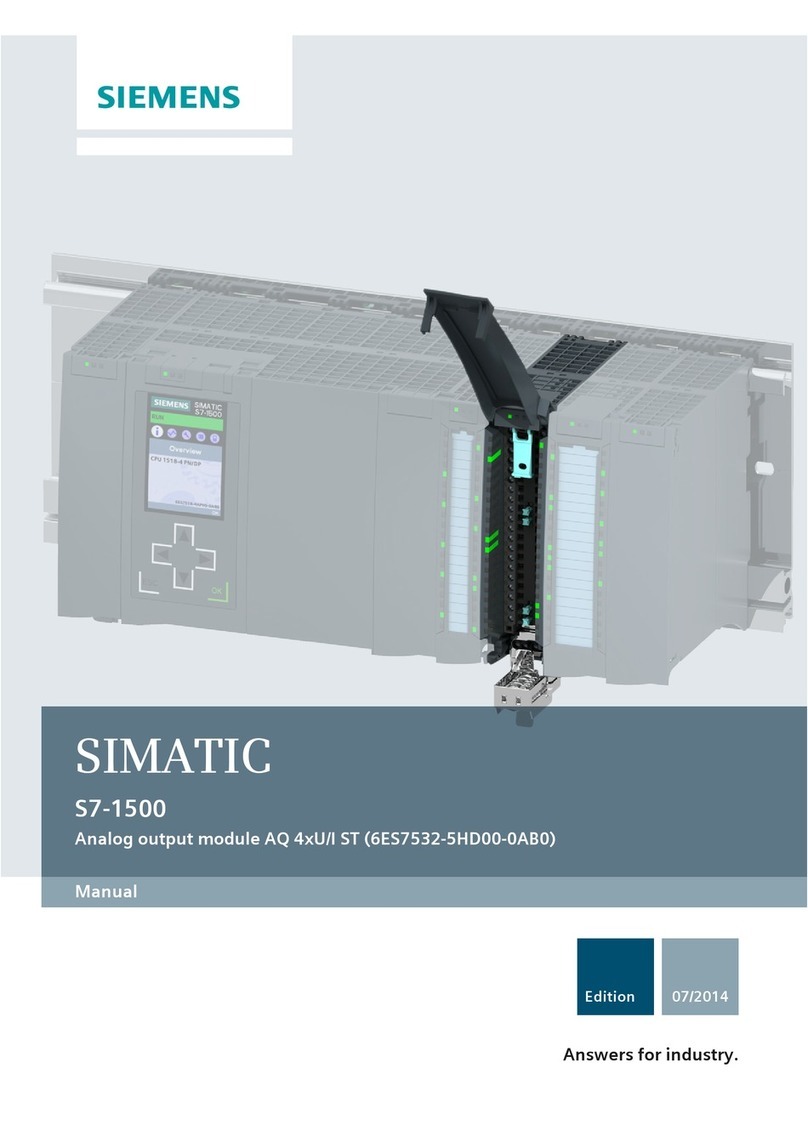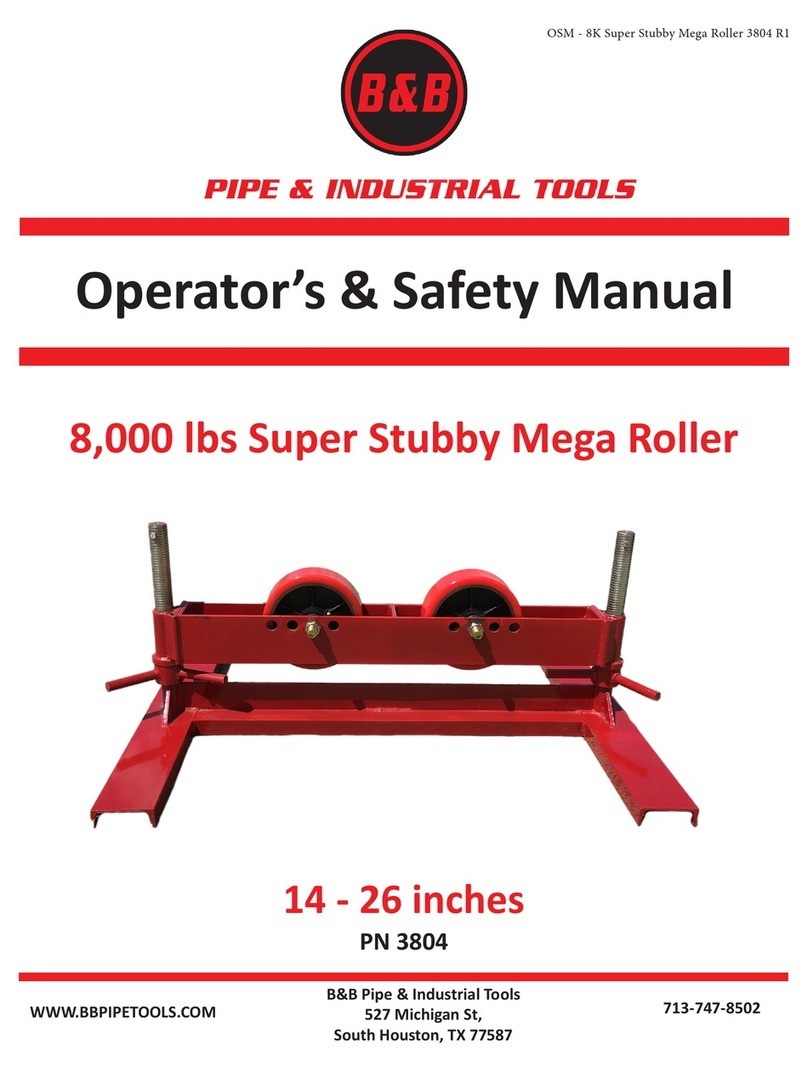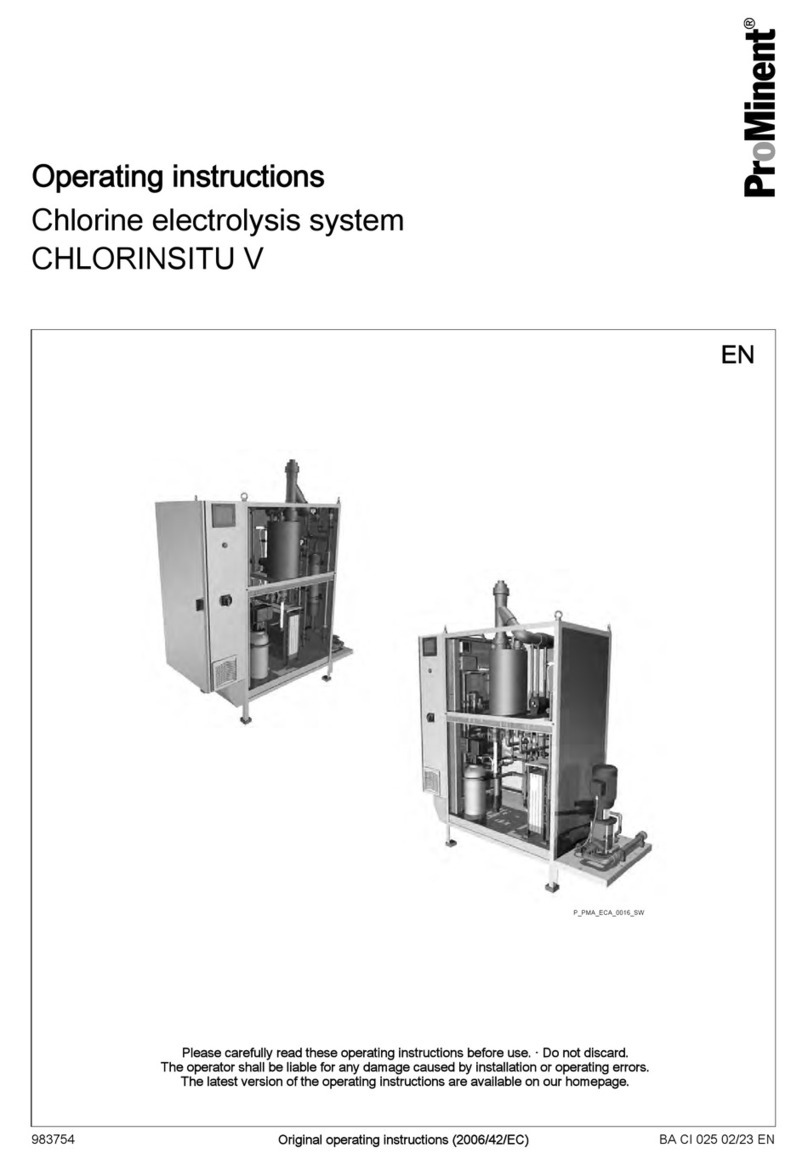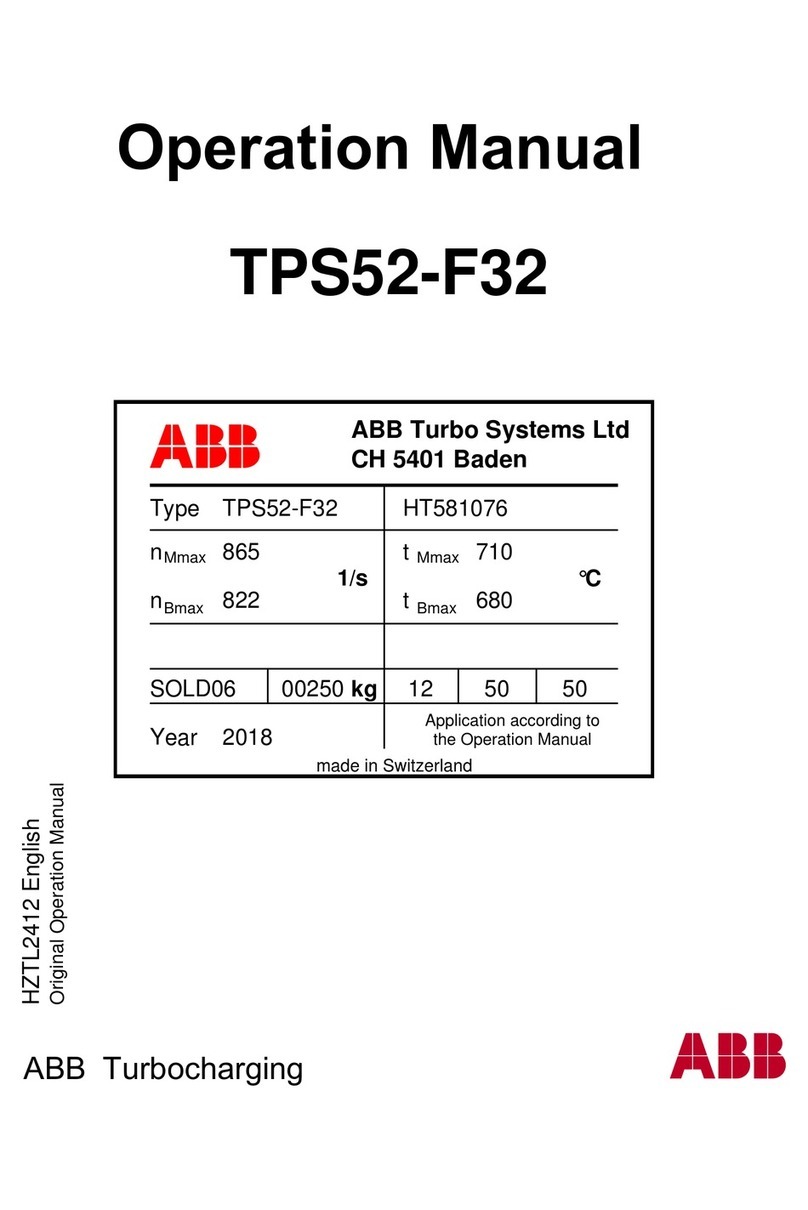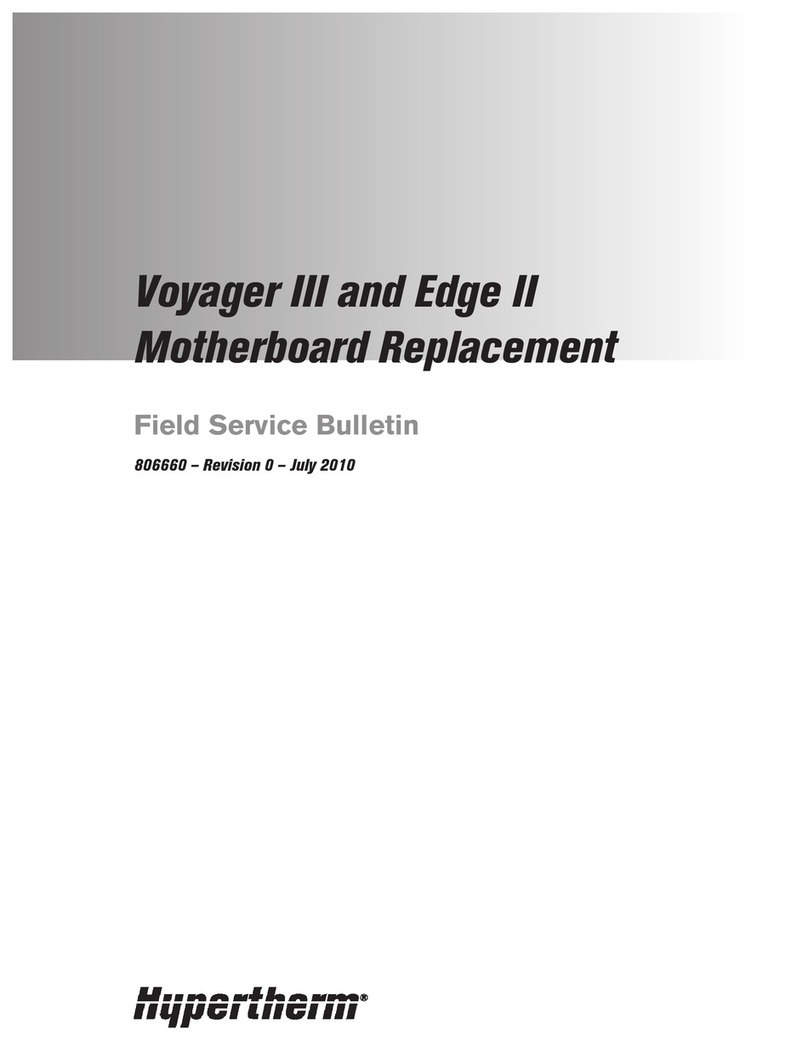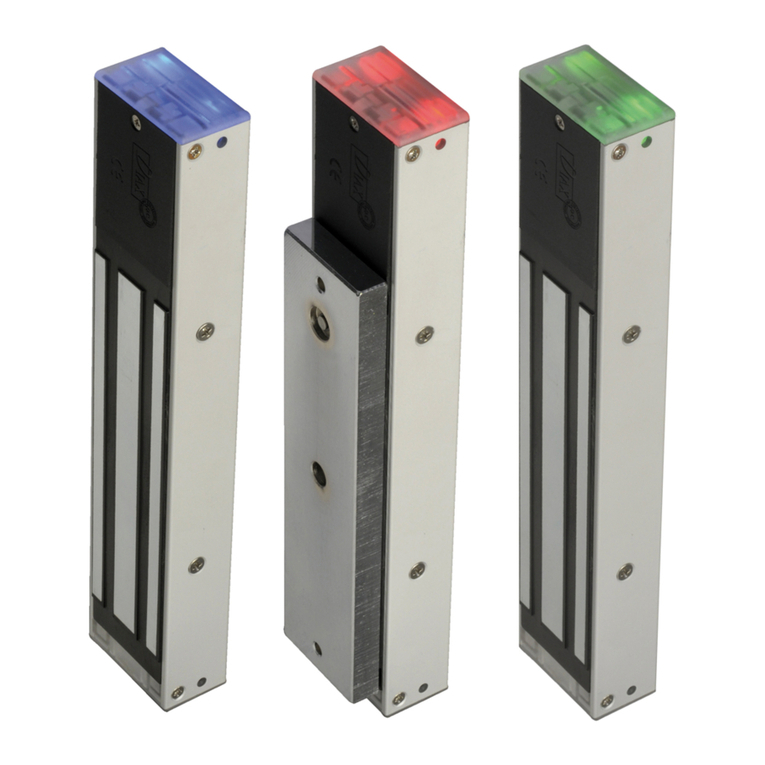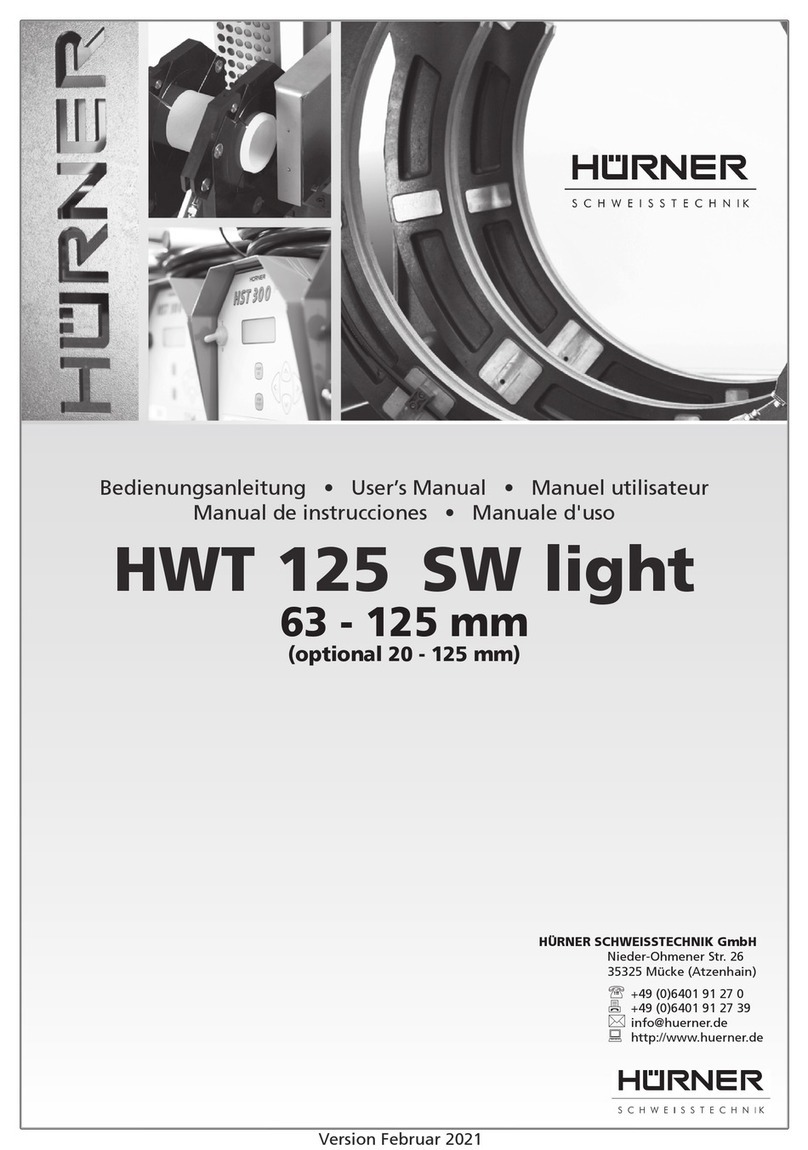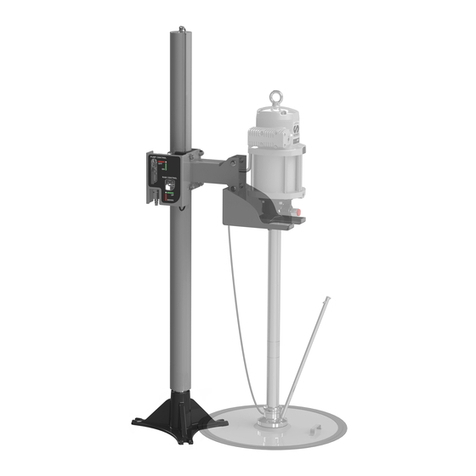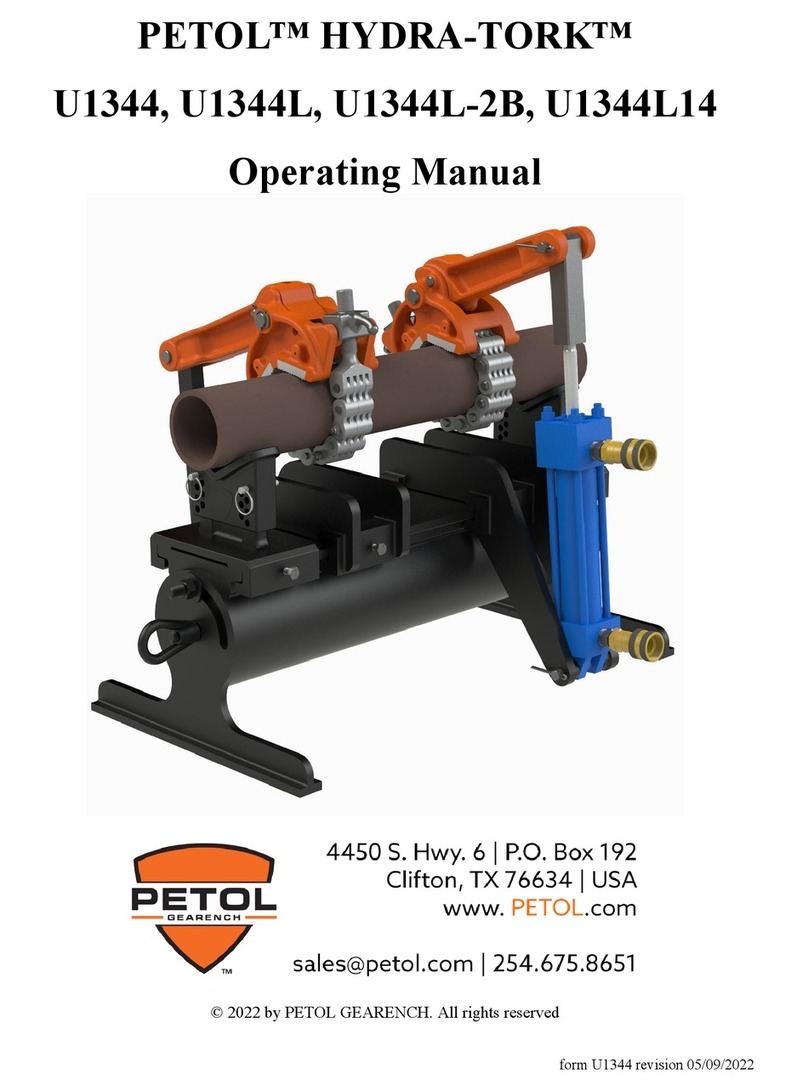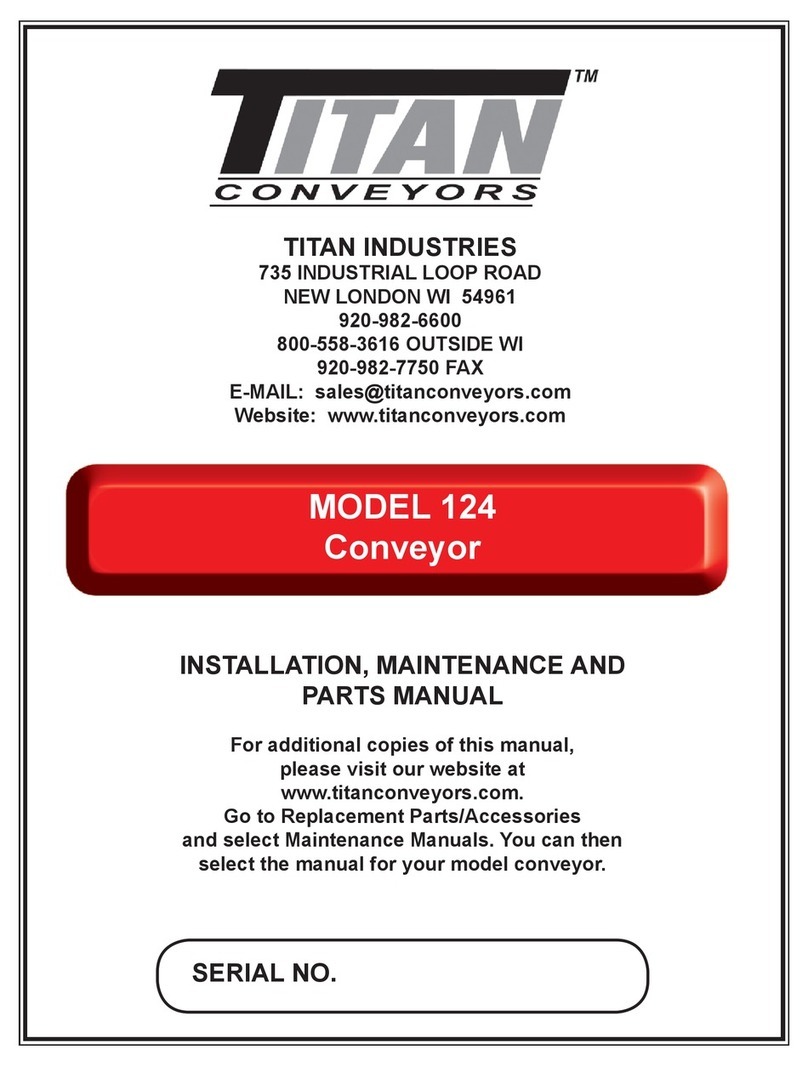Interroll PF 1100 User manual

Version 3.0 (June 2013)
EN - Translated from French
INSPIRED BY
EFFICIENCY
User manual
Interroll Pallet Roller Flow FIFO
PF 1100

Version 3.0 (June 2013)
EN - Translated from French
Manufacturer
Interroll Dynamic Storage
310, rue du Clair Bocage
Zone d'Activité Beaupuy 2
85000 Mouilleron le Captif
France
Tel. +33 251 37 12 32
Fax +33 157 67 99 71
www.interroll.com
Copyright for this manual
Interroll Dynamic Storage holds the copyright on this manual. The manual contains standards,
drawings, and illustrations which may not be disclosed, published, or duplicated, either fully or in
part, nor used for any other purpose than the installation referred to in this manual, without the
prior written consent of Interroll.

Pallet Flow Roller Flow FIFO
3
Version 3.0 (June 2013)
EN - Translated from French
Contents
About this manual
Remarks concerning the use of this manual................................................ 4
Warnings in this document........................................................................... 5
Additional symbols ....................................................................................... 5
Safety
General safety instructions .......................................................................... 6
Intended use ................................................................................................ 6
Unintended use............................................................................................ 6
Qualified personnel ...................................................................................... 7
Risks ............................................................................................................ 7
Product information
Product description ...................................................................................... 8
Components................................................................................................. 8
Technical characteristics of the Pallet Roller Flow FIFO ............................. 9
Transportation and storage
Transportation............................................................................................ 11
Storage ...................................................................................................... 11
Assembly and installation
Warnings concerning assembly ................................................................. 12
Assembly rules........................................................................................... 13
Lane assembly........................................................................................... 16
Step 1 - Assembly of the test bay .............................................................. 16
Step 2 – Lane test...................................................................................... 36
Step 3 - Lane assembly ............................................................................. 42
Start-up and operation
Warnings concerning operations ............................................................... 43
Checks before the initial start-up ............................................................... 44
Forklift requirements .................................................................................. 44
Loading and unloading methods................................................................ 45
Operation ................................................................................................... 46
What to do in case of an accident or failure............................................... 53
Cleaning, maintenance and repair
Cleaning..................................................................................................... 54
Remark in case of maintenance and repair ............................................... 54
Using a maintenance pallet........................................................................ 55
List of maintenance and inspection operations.......................................... 56
Troubleshooting
In the event of a failure .............................................................................. 60
Troubleshooting ......................................................................................... 61
Decommissioning and scrapping
Waste disposal........................................................................................... 63
Appendix
Identification of kits and spare parts on the modules................................. 64

Pallet Flow Roller Flow FIFO
About this manual
4Version 3.0 (June 2013)
EN - Translated from French
About this manual
Remarks concerning the use of this manual
Manual contents This manual provides remarks and important information about the various oper-
ating phases of the Pallet Roller Flow:
• Transport, assembly and start-up
• Safe operation, maintenance, troubleshooting, waste disposal
Validity of this manual This manual describes the Pallet Roller Flow as it is delivered by Interroll.
In the event of an installation involving non-standard containers or contents, specif-
ic recommendations, specific operations modes and all contractual documents are
provided along with this manual.
This manual is an integral part
of the product • To ensure safe, reliable operation and to benefit from the guarantee, before us-
ing the Pallet Roller Flow you must follow the recommendations in this manual
and the data in the order confirmation.
• Keep this manual near the Pallet Roller Flow.
• Give this manual to any operator or subsequent user of the Pallet Roller Flow.
• Interroll shall not be held responsible for damages or failures which may result
from ignoring the recommendations in this manual.
• Contact Interroll Customer Service if you have any questions after reading this
manual. The last page lists the details of the person to contact in your country.

Pallet Flow Roller Flow FIFO
About this manual 5
Version 3.0 (June 2013)
EN - Translated from French
Warnings in this document
The warnings in this document concern dangers which may arise while using the
Pallet Roller Flow. For relevant warnings see Safety, page 6, and the warnings at
the beginning of each chapter.
There are three categories of danger, indicated by the following key words:
• Danger
• Warning
• Caution
Structure of warnings
Additional symbols
This symbol displays safety instructions.
This symbol marks useful and important information.
This symbol marks the steps that have to be carried out.
Key word Meaning
Danger Indicates a hazardous situation, which, if not avoided, may
result in death or serious injury.
Warning Indicates a hazardous situation, which, if not avoided, may
result in death or serious injury.
Caution Indicates a hazardous situation, which, if not avoided, may
result in a minor or moderate injury.
Danger
Nature and source of hazard
Possible consequences of non-observance.
►Information about how to avoid the hazard.
Notice
This symbol identifies possible material damage.
►Information about how to avoid damage.
►

Pallet Flow Roller Flow FIFO
Safety
6Version 3.0 (June 2013)
EN - Translated from French
Safety
General safety instructions
The Pallet Roller Flow is designed according to the technical state of the art.
However, certain risks may still arise.
• Risks of physical injury or death to the user or bystanders
• Damage caused to the Pallet Roller Flow or to other material
Disregarding the warnings in this manual may lead to serious injury or even death.
►Always read this manual carefully and make sure you follow the safety instruc-
tions.
►Only qualified and specially trained personnel may work with the
Pallet Roller Flow .
►Always keep this manual at hand and make it accessible to all personnel.
►Always comply with the relevant national safety regulations in your company.
►Contact Interroll Customer Service if you have any questions after reading this
manual. The last page lists the details of the person to contact in your country.
Intended use
The Pallet Roller Flow is reserved exclusively for industrial use in suitable envi-
ronments. The installed lanes are intended for dynamic (gravity-based) storage
only of foreseen and previously approved isolated loads. They are reserved ex-
clusively for storing referenced or standardised containers.
Any other use is considered inappropriate.
The installation configurations must be applied. They are defined in the order con-
firmation and in this manual. All other changes concerning the components and
their location in the lane are not authorised.
To load and unload containers in the lanes, a suitable forklift must be used. This
forklift must meet all the following functions:
• inclinable upright or forks or not according to the provisions in the order confir-
mation
• upright height adapted to the rack height
Comply with the maximum loads recommended by the rack manufacturer and indi-
cated on the load plate. The content must not exceed the maximum load specified
by the container supplier or by the standards.
Unintended use
The Pallet Roller Flow may not be used to transport people, bulk products, or
small parts.
Applications which do not comply with the planned use of the Pallet Roller Flow
require prior written approval from Interroll.

Pallet Flow Roller Flow FIFO
Safety 7
Version 3.0 (June 2013)
EN - Translated from French
Qualified personnel
Qualified personnel are persons who read and understand this manual, and tak-
ing national regulations into account, can completely execute incidental work.
Only qualified and trained personnel may work with the Pallet Roller Flow taking
the following into account :
• The relevant manuals and diagrams
• The warnings and safety instructions in this manual
• The system specific regulations and requirements, see "Assembly and installa-
tion", page 12
• National or local regulations and requirements for safety and accident preven-
tion
Risks
The following list informs you about the various types of dangers or damage that
may occur when installing or working with the Pallet Roller Flow.
Personal injury ►The equipment may be used by qualified personnel only, in any of its operations
modes.
►Comply with the technical data provided in the order confirmation.
►Follow the assembly and operating instructions.
►Use suitable forklifts only.
►Check the installation and perform maintenance on a regular basis.
►Make sure that no one walks or stands underneath loads, or in the loading or
unloading zones of the dynamic storage lane. Take all necessary precautions
to prevent the presence of personnel within the lanes.
►Make sure that the loading / unloading rows include sufficient lighting so as not
to hinder handling operations.
Risk of injury : do not walk on the side profiles of the modules, or on the rollers with-
out using a safety harness.
Rotating parts ►Wear suitable work clothes and Personal Protection Equipment (safety shoes,
gloves, etc.)
►Tie up long hair or wear a cap.
►Remove jewellery such as necklaces or bracelets.
►Do not walk on the rollers.
►Only maintenance personnel is authorised to enter the lanes, and only in com-
pliance with current safety standards.

Pallet Flow Roller Flow FIFO
Product information
8Version 3.0 (June 2013)
EN - Translated from French
Product information
Product description
The Pallet Roller Flow is a dynamic storage system for heavy loads. It ensures
the controlled descent of pallets.
Speed controllers control the descent of loads at a constant speed.
On the unloading site, the separator isolates the pallet from the pressure of the
accumulated line of pallets.
Components
(1) Separator flap
(2) Side profile
(3) Handling rollers
(4) Separator stop
(5) Speed controller
(6) Cross-tie
(7) Pallet guide
(8) Loading plate
(9) Loading module
(10) Module riser
(11) Intermediate module
(12) Unloading module
(13) Lane end stop
(14) "Time plus" retarder

Pallet Flow Roller Flow FIFO
Product information 9
Version 3.0 (June 2013)
EN - Translated from French
Technical characteristics of the Pallet Roller Flow FIFO
Gravity-based system
Atmospheric conditions
Load 60 to 1250 kg per pallet
Regulated speed 0.3 m/sec from 60 to 1250 kg
Maximum instantaneous speed 0.6m/sec from loading to separation
Maximum deceleration 1 m/sec.2
Slope Specified in the order confirmation
Generally recommended slope: 4 %
Types of pallets handled by the
Interroll system
• Standardised EUR EPAL pallet 800
mm x 1200 mm (W X D),
see "Intended use", page 6
• Standardised EUR EPAL pallet 1000
mm x 1200 mm (W X D)
• Standardised GKN CHEP pallet 1000
mm x 1200 mm (W X D)
• Other containers: please contact
Interroll.
Forklifts Specified in the order confirmation
Ambient tem-
perature
during
operation
-30 °C to +40 °C
during assembly -30 °C to +40 °C
for transportation
and storage
- 30 °C to +80 °C
Humidity Up to max. 90%, without condensation

Pallet Flow Roller Flow FIFO
Product information
10 Version 3.0 (June 2013)
EN - Translated from French
Load contents The contents of the loads and their containers must not:
• Oxidise
• Corrode
• Decompose
• Block the lane's components
• Pollute steel or plastic components
• Prevent correct operation of any mechanisms
The Pallet Roller Flow must not be used in direct contact with food products.
Environment The Pallet Roller Flow is not suitable for use in an
environment presenting the following risks:
• Oxidisation (either atmospheric or via chemical attacks)
• Projection
• Decomposition
• Vibration
• Explosion
• Radioactive radiation
• Electromagnetic radiation
Exceptions are possible: please contact Interroll.

Pallet Flow Roller Flow FIFO
Transportation and storage 11
Version 3.0 (June 2013)
EN - Translated from French
Transportation and storage
Transportation
►Only qualified and authorised personnel should transport the equipment.
►Use slings or appropriate lifting equipment to transport the equipment.
►If the content is unstable, unload the container unit by unit and not by truck.
►The weight of each pallet is indicated on it. If using a forklift with a different lifting
capacity, handle the module pallets one by one.
Storage
►Store equipment indoors.
►Never store the equipment outdoors, or in a dusty or humid environment.
►Respect the ambient conditions, see "Technical characteristics of the Pallet
Roller Flow FIFO", page 9.
►Do not add additional loads to the pallets and boxes containing the
Pallet Roller Flow and its components.

Pallet Flow Roller Flow FIFO
Assembly and installation
12 Version 3.0 (June 2013)
EN - Translated from French
Assembly and installation
Warnings concerning assembly
Warning
Risk of injury in case of incorrect assembly
►As the Pallet Roller Flow is the subsystem of the overall instal-
lation, you need to perform a risk analysis of the entire installa-
tion.
►Identify the protective measures required concerning risks re-
lated to the local conditions at the site and to usage.
►Define a safety zone in the working area.
►Secure the zone and set up proper signalling and appropriate
protection.
►For assembling modules on the rack, refer to the safety rules
concerning working at height.
►Never climb on the rollers nor on the lane profiles without a
safety harness.
►During assembly, wear appropriate Personal Protective Equip-
ment (gloves, safety shoes, safety harness, helmet, etc.).

Pallet Flow Roller Flow FIFO
Assembly and installation 13
Version 3.0 (June 2013)
EN - Translated from French
Assembly rules
There are several methods for assembling the Pallet Roller Flow. Adapt the as-
sembly method provided by Interroll according to the national and local safety
rules and requirements in the installation country. Some companies may require
the use of a boom lift for work at a height.
The dynamic storage lanes are subsystems of the overall installation. They are
delivered in compliance with the technical data indicated in the order confirma-
tion.
The delivery of Pallet Roller Flow lanes comprises pre-assembled roller chassis
and accessories. These components must be assembled, installed and posi-
tioned on a rack or on module risers.
If any changes are made to the components or their location in the lanes, then
Interroll is no longer responsible for the installation, as this represents unintended
use of the Pallet Roller Flow.
The racks must be assembled at the same time as roller modules are inserted on the
beams. The racks must be attached to the floor to provide rigidity to the entire
system.
Qualified personnel The assembly and installation must be carried out by qualified personnel in com-
pliance with the instructions concerning assembly and installation, and with safety
instructions,
The manager of the team responsible for assembling the lanes must be techni-
cally competent and trained concerning the following:
• The products and their use
• The dangers inherent in the assembly of heavy or cumbersome components in
high places.
• The risks related to incorrect assembly
• Uncontrolled speeds or propulsion of loads stored on the lane may may cause
serious accidents.
• The adjustments required for correct operation of the lanes.
Interroll can provide dedicated training on the Pallet Roller Flow. We will send a
quote on request.
General rules ►Comply with the rack specifications.
►If other systems interface with the Pallet Roller Flow, use the same reference
point as the other systems to level the frames.
►Check the stability of the modules on the containers before cutting the bands.
►Recommended torque for modules on connecting plates: 45 Nm.
►Always start assembly from the loading site.
►Make sure you do not damage the modules nor the other components during
assembly. Pay particular attention to the speed controllers, the separator and
the end stop.
►It is recommended to install a floor stop in front of both the loading and unload-
ing sides. The stop is used to halt the forklift and thus prevent any contact with
the rack.
►Contact Interroll before attaching or hanging any equipment (such as sprin-
klers) in the area surrounding the dynamic storage installation.
►Clean the work site at the end of the installation. Do not leave components or
tools in the installation area or its surroundings.
►Test the lanes before use.

Pallet Flow Roller Flow FIFO
Assembly and installation
14 Version 3.0 (June 2013)
EN - Translated from French
Rack assembly The rack must be attached to the floor according to the rack manufacturer's spec-
ifications.
The module risers, provided by Interroll, must be attached according to the floor
specifications.
The beams must be perpendicular to the supporting frames.
The beams must be horizontal.
The beams must be aligned and must have a constant slope from loading to un-
loading. The slope matches the slope of the lane.
Adjusting the slope ►The roller modules are installed with a slope of 4% unless indicated in the mas-
ter diagram.
►Ensure each type of beam is correctly located according to the overall rack di-
agram.
Beam perpendicular to the supporting frames (top view)

Pallet Flow Roller Flow FIFO
Assembly and installation 15
Version 3.0 (June 2013)
EN - Translated from French
Positioning the module
on the rack The space between the lane and the rack upright must be uniformly spread. A
minimum value of 35 mm is recommended.
A minimum space of 100 mm is recommended between the container and the
rack upright.
Single lane
a : The space between the lane and the rack upright: min. 35 mm
Dual lane
a : The space between the lane and the rack upright (a) is half the distance
(2a) between the lanes

Pallet Flow Roller Flow FIFO
Assembly and installation
16 Version 3.0 (June 2013)
EN - Translated from French
Lane assembly
Identifying the components The attached diagrams show the composition of the Pallet Roller Flow lane. The
diagrams are included in an envelope inside the spare parts box.
►Identify each component by referring to the diagrams. This is especially impor-
tant when you must assemble different types of lanes.
►Check that all the parts required and indicated for the assembly are available.
If anything is missing, you must inform Interroll within 8 days.
Checking the rack ►Check that the rack is installed according to instructions, see "Rack assembly",
page 14.
►Pay particular attention to the alignment and the slope of the beams.
Step 1 - Assembly of the test bay
Before proceeding with assembly of the complete installation, a test bay must be
assembled to ensure the correct operation of the system.
►Start by defining the location of the dynamic storage block by referring to the
master diagram.
►If necessary, remove the module pallets from the assembly area.
►Sweep the zone and secure the work area.
►Mark on the floor the grid which will enable you to position each of the frame
uprights.
►Using a laser or site laser level, define the aligning heights for each frame up-
right.
The rack uprights must all be level to ensure correct system operations. In the event
ofincorrectrack installation,Interrollshall notbeheld responsible forany operating
malfunctions.

Pallet Flow Roller Flow FIFO
Assembly and installation 17
Version 3.0 (June 2013)
EN - Translated from French
Rack ►Start by installing the front row of frames, on the loading side. Align the rack
according to the floor markings on the front and sides
►Use as many wedges as required to ensure the rack is level (level height ob-
tained by laser or site laser level). The beams must be horizontal and the up-
rights vertical.
Vertical ±0.25%
Horizontal ±0.25%

Pallet Flow Roller Flow FIFO
Assembly and installation
18 Version 3.0 (June 2013)
EN - Translated from French
►Position the beams along the row of frames according to the master diagram
provided by the rack manufacturer.
The beams must be aligned and must have a constant slope from loading to un-
loading. The slope matches the slope of the lane (4% = rise of 50 mm every 1250
mm).
►Drill then fasten the uprights to the floor.
Ensure you use the correct beam type on the loading side (tubular beam o
r
angle beam)
Tubular beam Angle beam

Pallet Flow Roller Flow FIFO
Assembly and installation 19
Version 3.0 (June 2013)
EN - Translated from French
Loading modules For installation of the Pallet Roller Flow lanes, see the assembly diagram in
the appendix.
►On the loading side, insert all the loading modules for the test bay on the rack.
Align and attaching the first module
►Align the first module on the loading side in relation to the pallet descent axis.
►Check that both distances (a) between the rack uprights and the profiles are
equal.

Pallet Flow Roller Flow FIFO
Assembly and installation
20 Version 3.0 (June 2013)
EN - Translated from French
Tubular beam - traverse roller
loading module (TR)
►Centre the fixing bracket on the beam then attach the bracket with 2 drill
screws.
►Depending on the corridor configuration, it is possible that the module splice
plates are to be used for the entire corridor at each module connection.
Attach without tightening Attach without tightening
Other manuals for PF 1100
1
Table of contents
Other Interroll Industrial Equipment manuals

